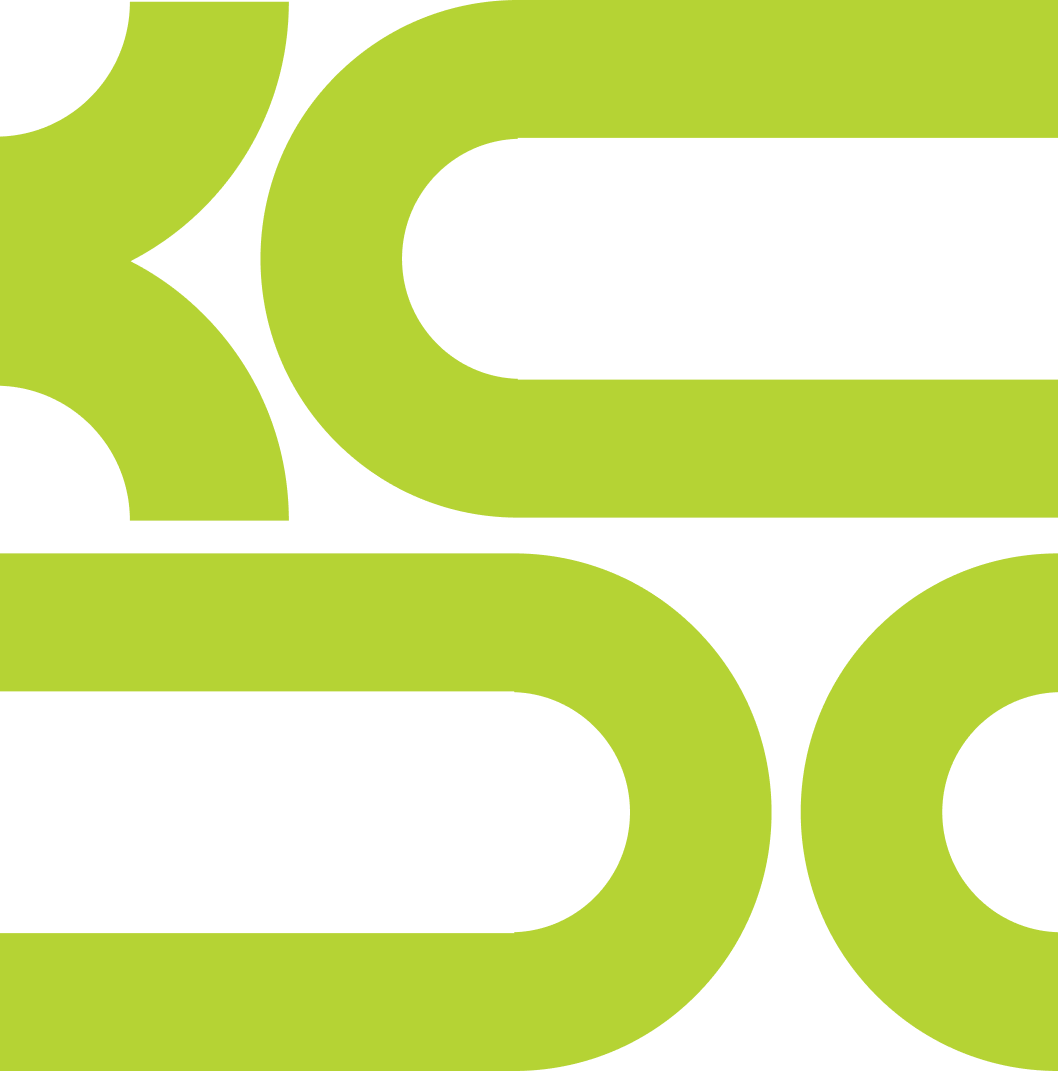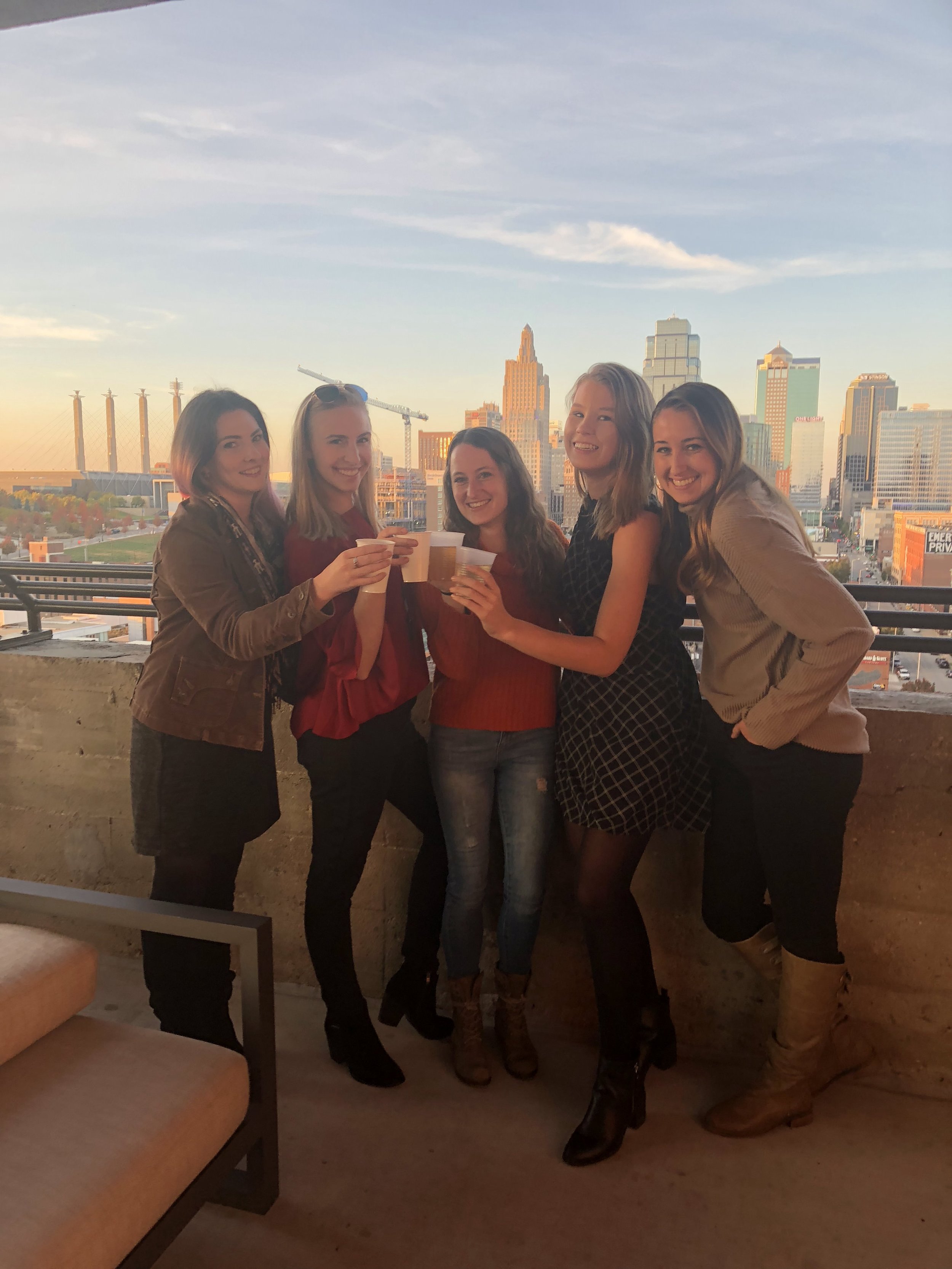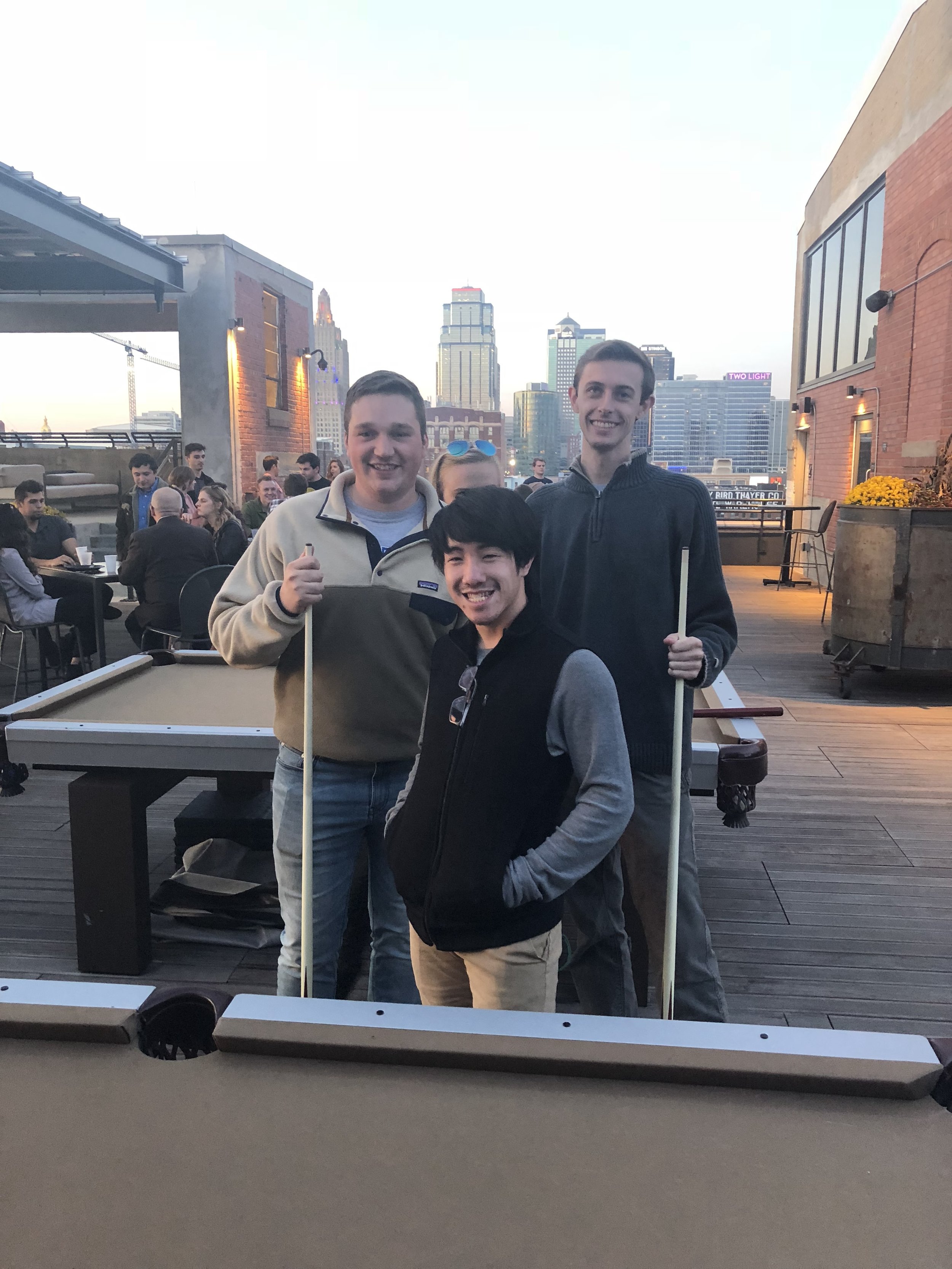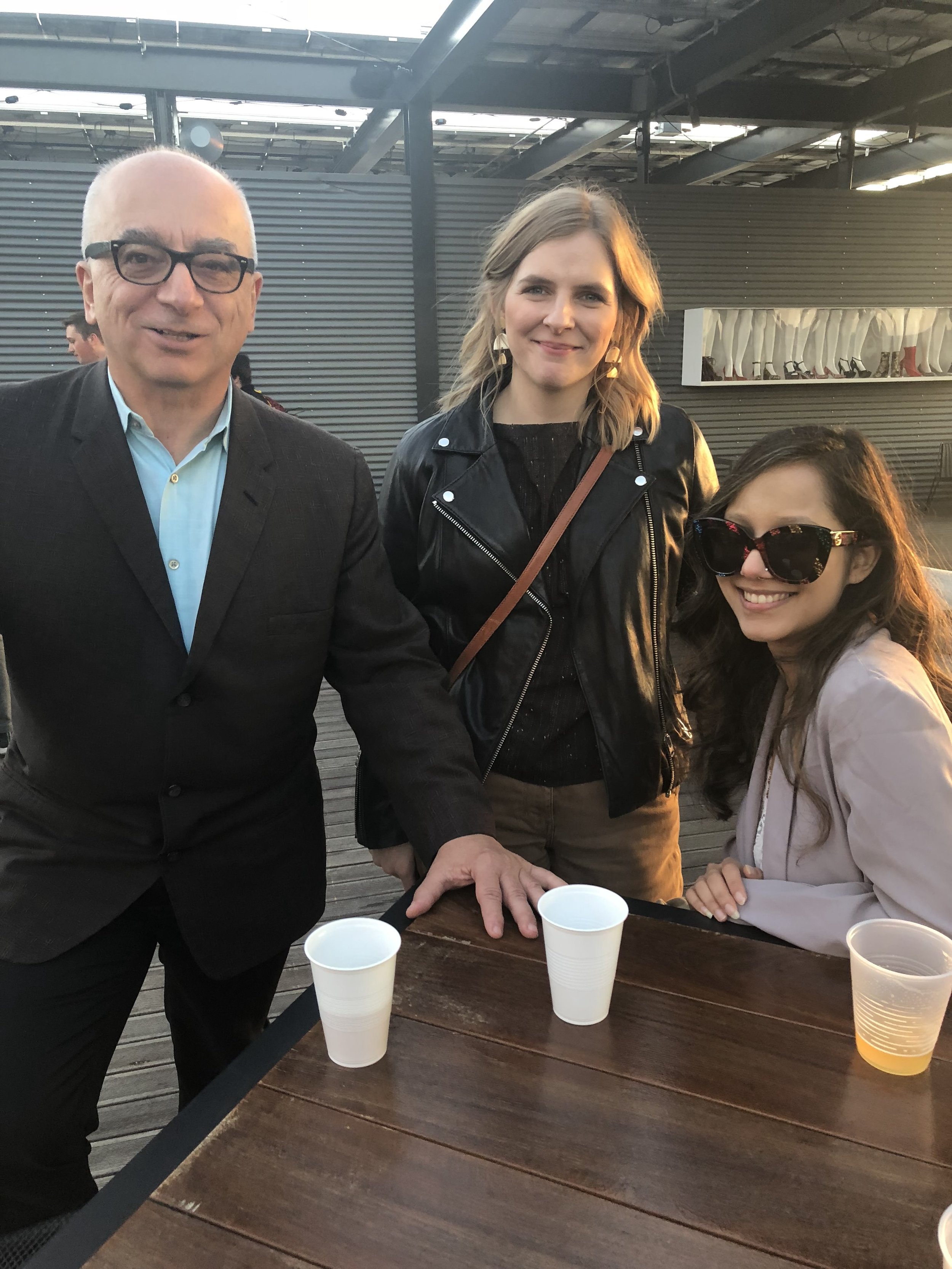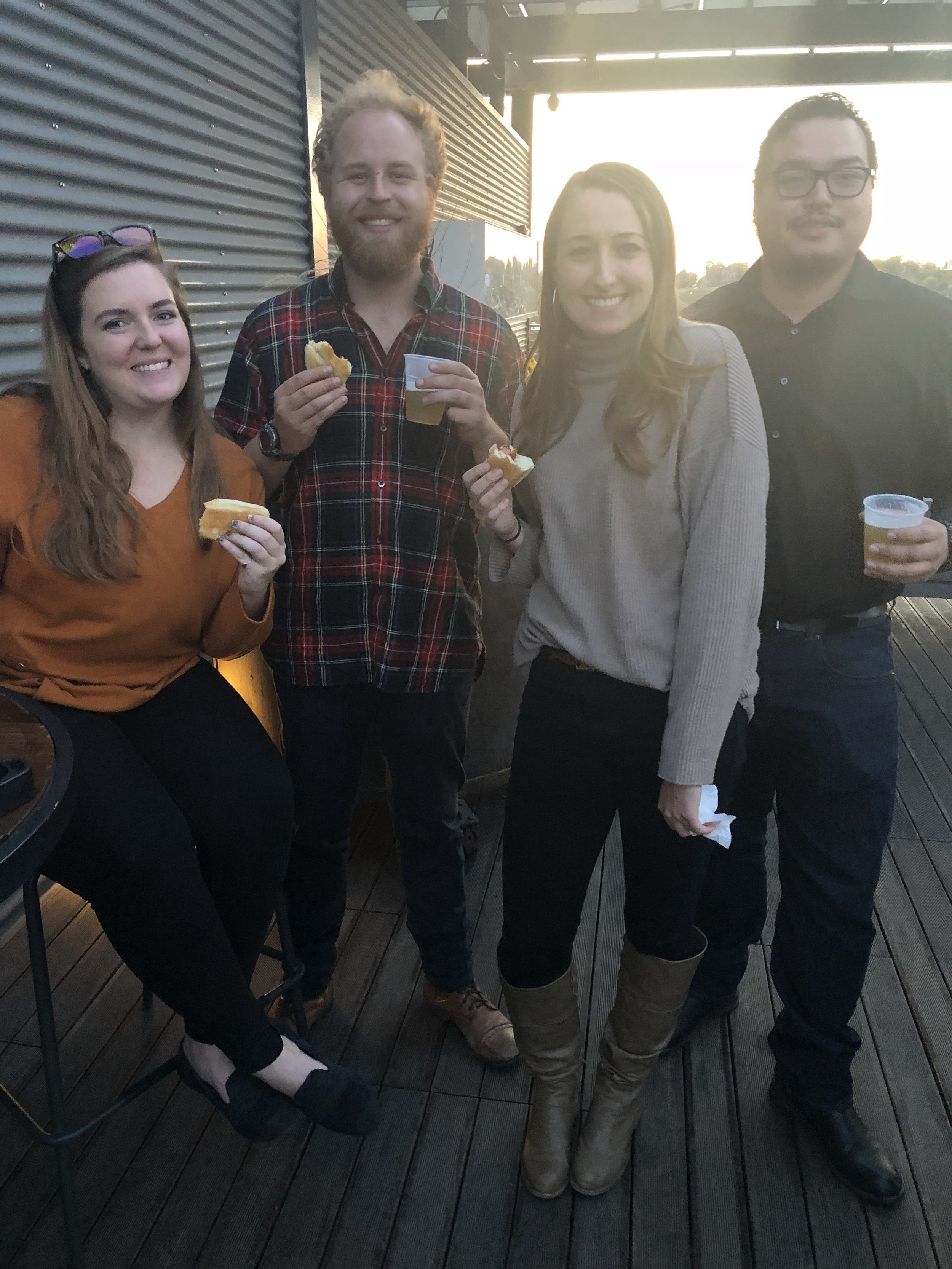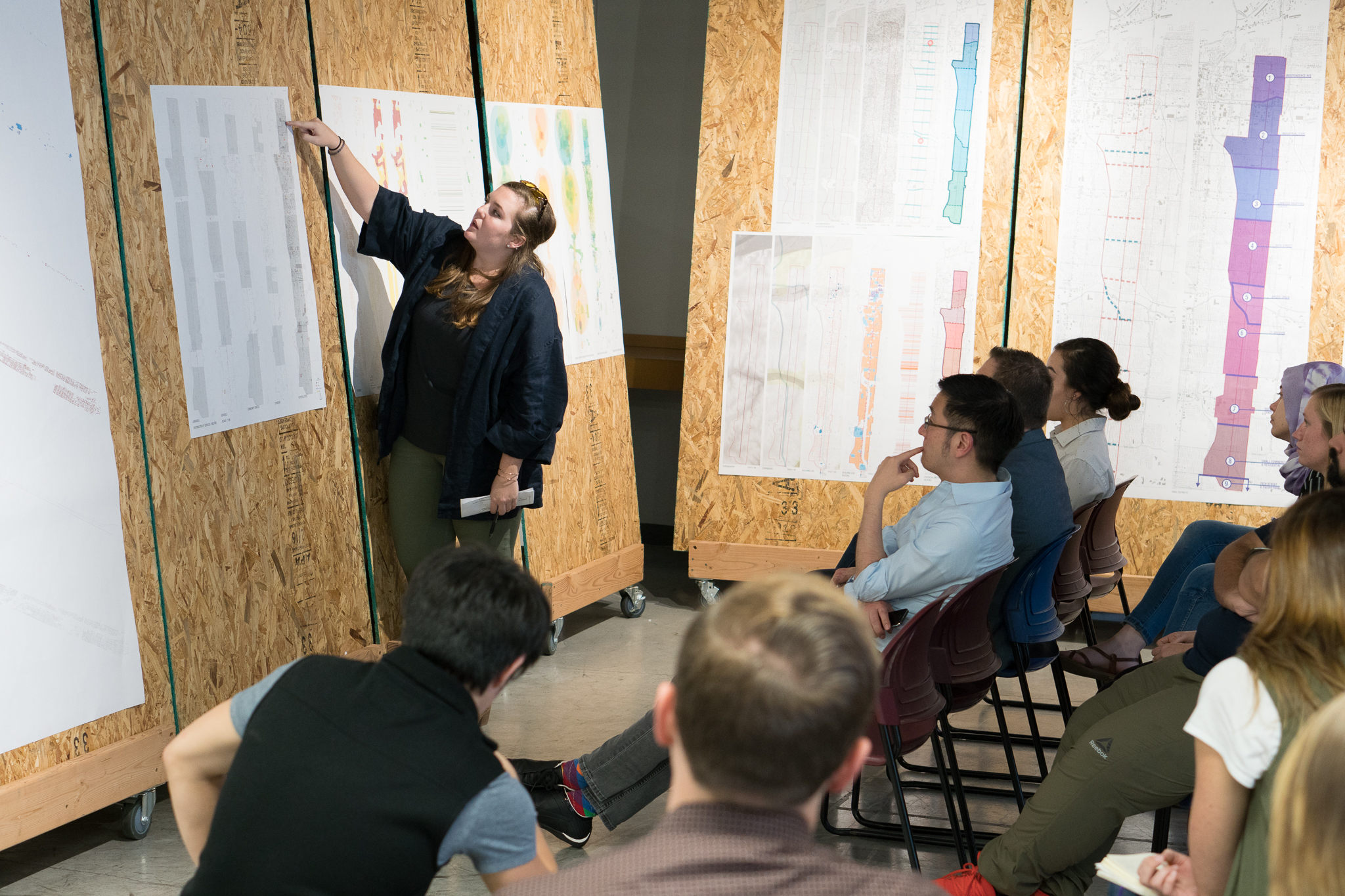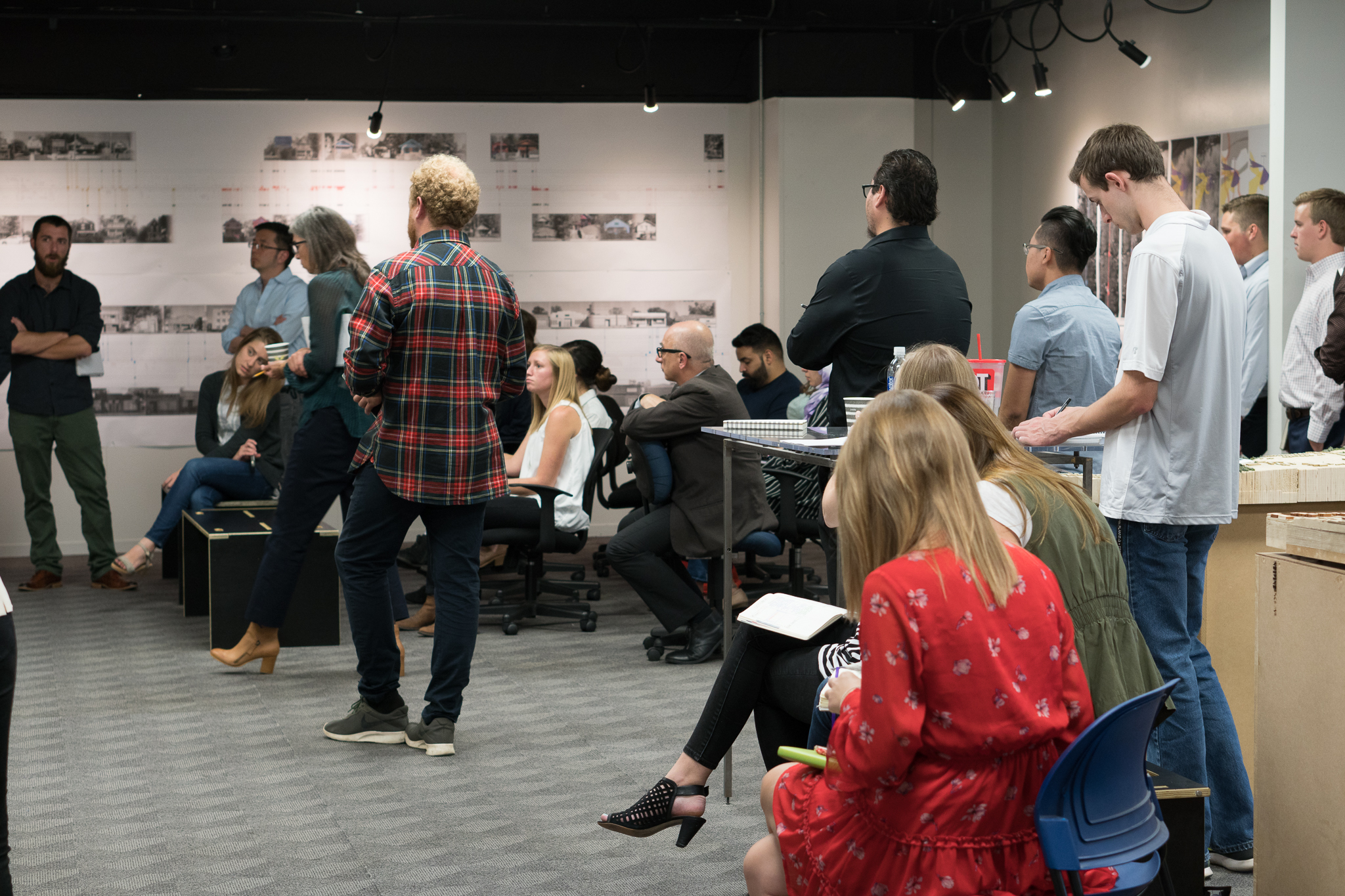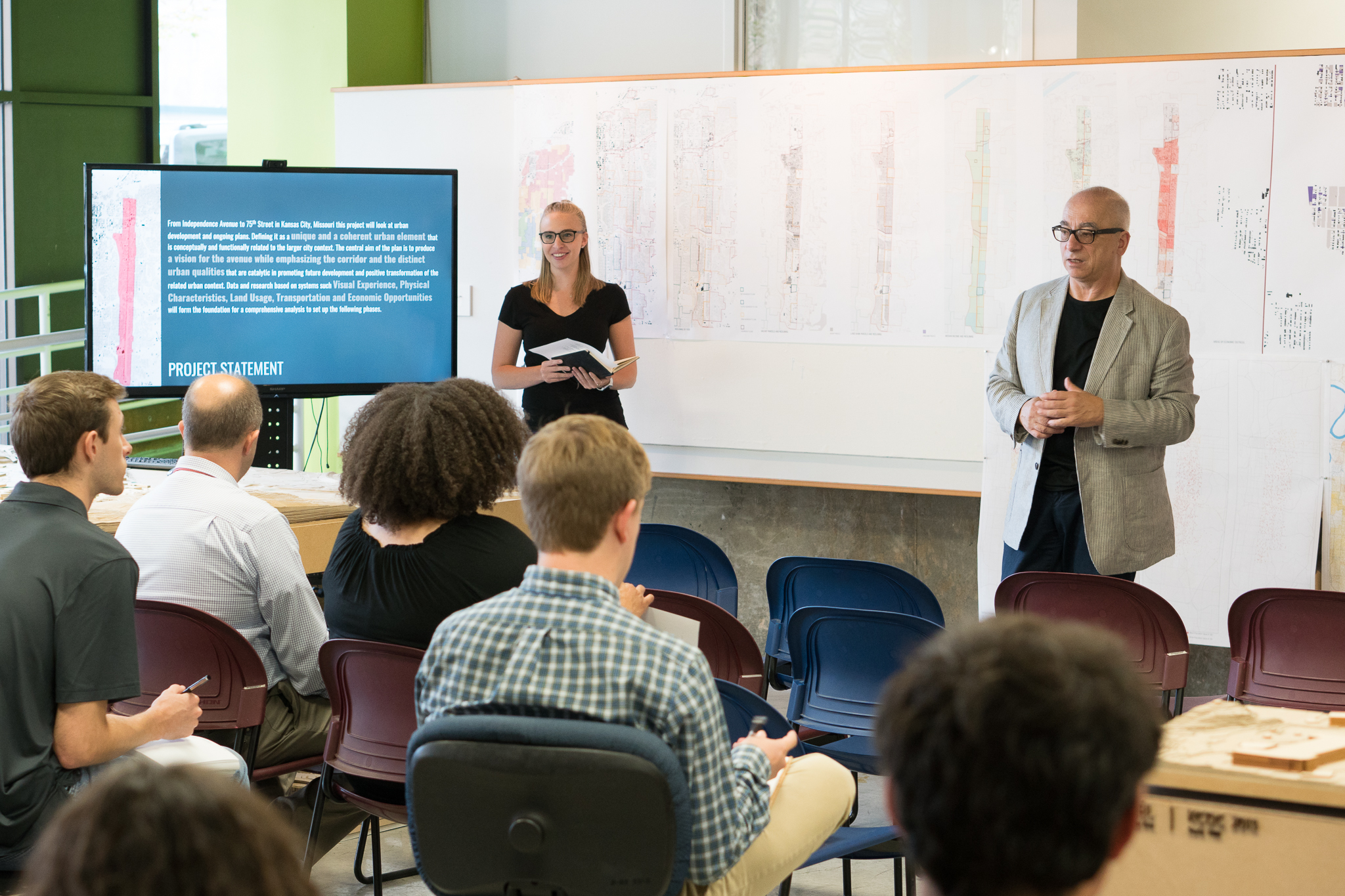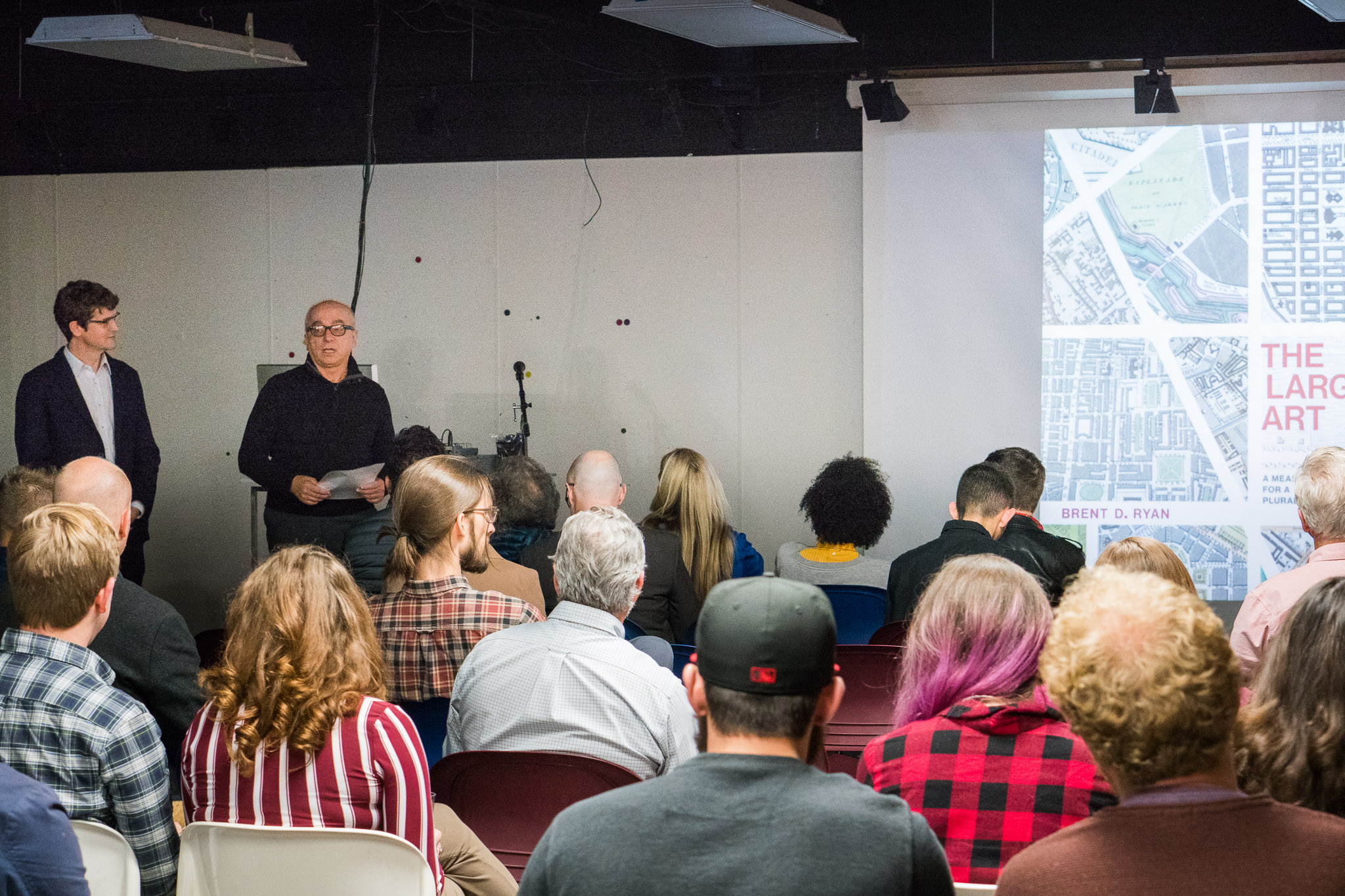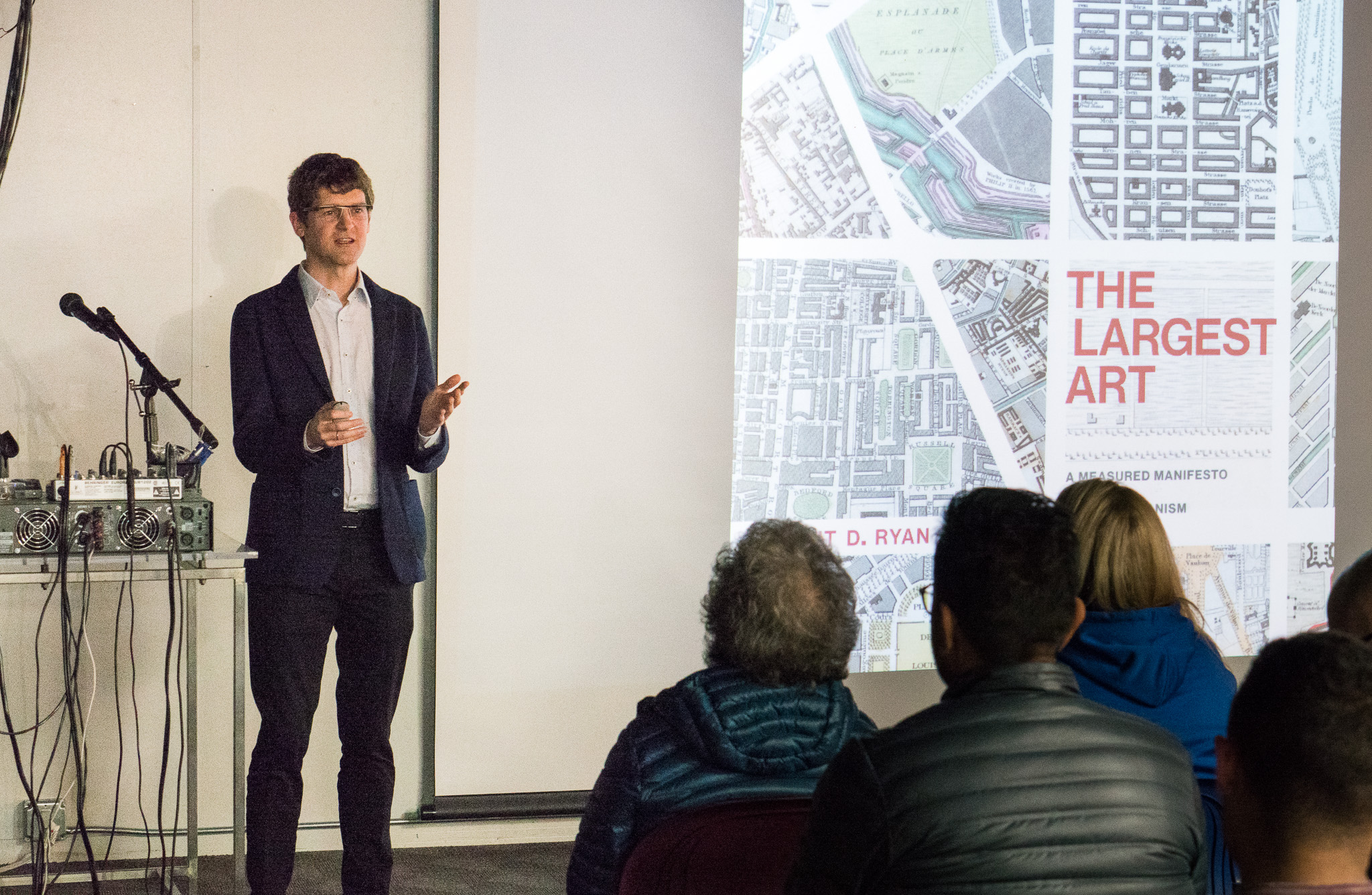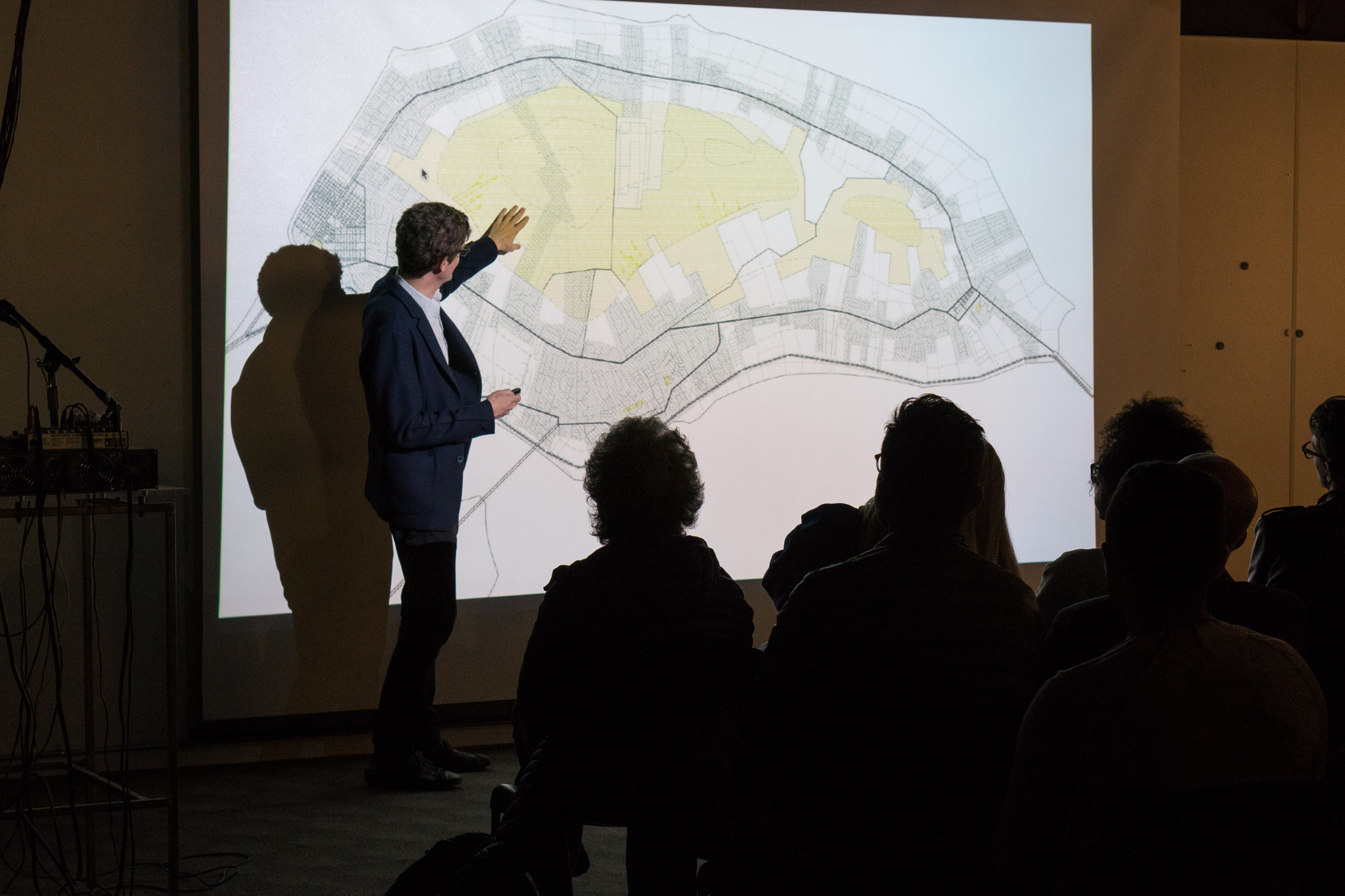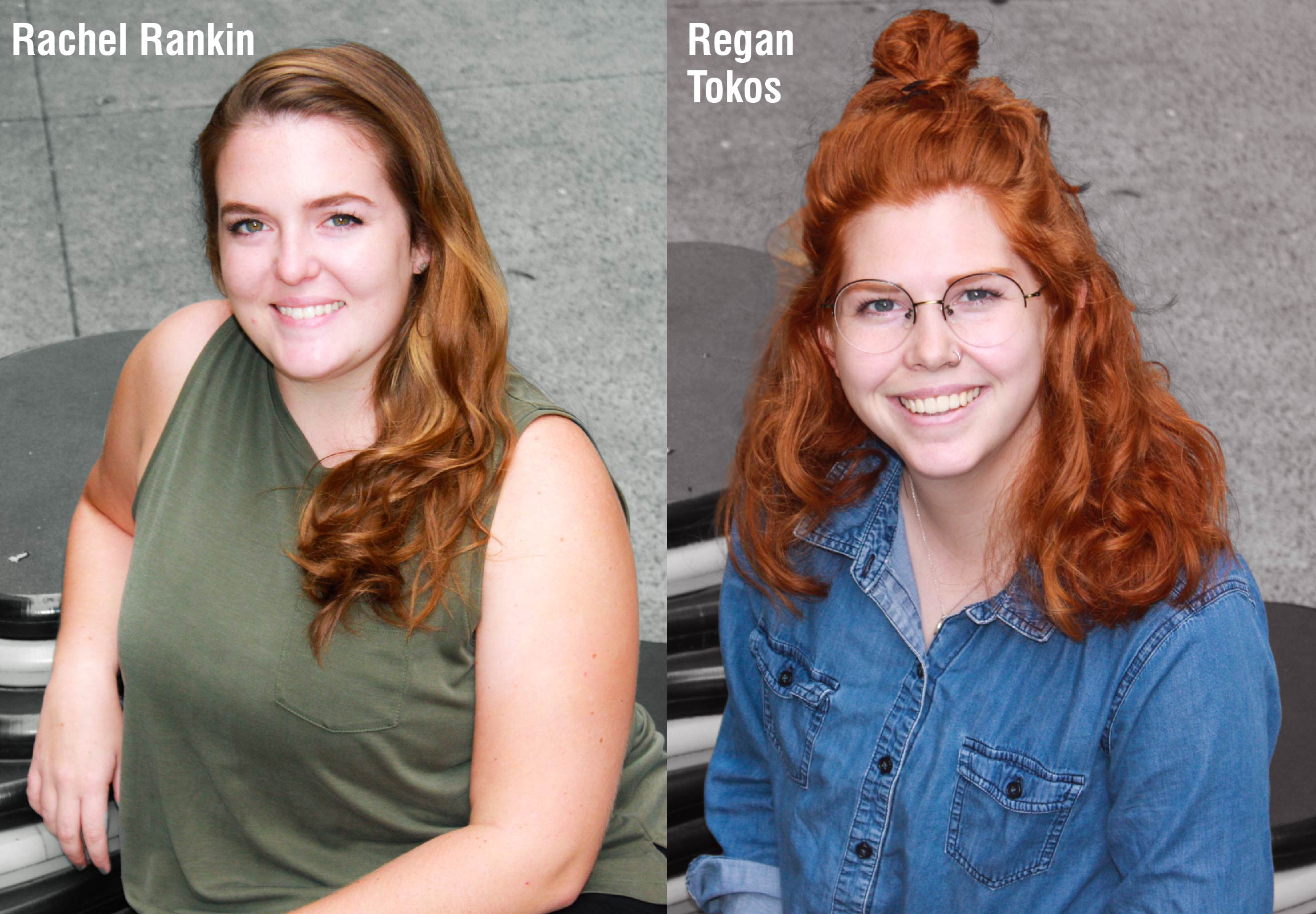We're in the Final Stretch!
/On October 22nd, KCDC students presented work from the Prospect Ave Nodal Study, from inventory mapping to the urban concept, with emphasis on the findings and how they relate to one another. Students are beginning to see Prospect Avenue as a series of areas that may require different strategies and interventions due to varying factors including infrastructure, service and amenity distribution, visual patterns, and physical barriers. A strong example is the lasting impact of Highway 71, which continues to effect Prospect Avenue by dividing it into separate sections and causing blight in the area where there is only a 1-parcel distance from Prospect. Guest reviewers were impressed with the progress of the sutdio, and suggested more community outreach would be appropriate in the near future. After the presentation, the KCDC staff, K-State students, KU students, and guest reviewers went to Hollis and Miller for a friendly rooftop BBQ.
Since then, the studio has continued to solidify the urban concept for Prospect Ave. Through multiple series of cross-mapping, data analysis, combing through literature, and case study synthesis, students have made great strides to finalize the concept as Thanksgiving Break approaches. Students are creating new maps that explain the concept, as well as study models (both large and small). Students are beginning to assemble the structure for the in-progress project publication (which will be published at the end of the semester) and discussing findings from the Project Programming class, which includes project description, case study synthesis, comparative analysis, and strategies to tackle not-yet-identified nodes.
For the studio’s case study selection and synthesis, 22 projects have been chosen from around the world that students are learning lessons and drawing inspiration from. These projects are divided into four overlapping categories that serve as potential methods to apply to Prospect Ave:
Branding – creating a brand for the entirety of a project area, utilizing characteristic graphics, signage, art, history, landmarks, etc. These projects form cultural identity and give visual representations for a given area.
Connectivity – focuses on movement through a corridor or strengthening a system of connectivity. These projects change the way streets can function through tactical transit-oriented development, and increasing or diversifying public transit solutions.
Ecological Remediation – reimagines the environment as an asset to infrastructure and people. These projects draw solutions from an ecological standpoint and turns issues such as pollution, flooding, animal welfare, and conservation into amenities for the city.
Patching – revitalized areas through strategic infill, development, and community engagement. These projects were given new life by taking areas strewn with urban gaps (vacant lots or abandoned buildings) and recycling the space into catalysts for change.
Here are the selected case studies and the categories which they fit in:
Atlanta Beltline: branding, connectivity, patching
Aurora Masterplan: connectivity, ecological remediation
Avenida Lecuna: connectivity, patching
Avenue of the Arts: branding, connectivity, patching
Blue River Valley: branding, ecological remediation, patching
Bogota, Colombia: branding, connectivity
Chicago Riverwalk: connectivity, ecological remediation, patching
Colfax Avenue: branding, connectivity
East Baltimore: connetivity
Fabrica de Cultura Grotao: branding, ecological remediation, patching
Flip-a-Strip: patching
Klyde Warren Park: branding, connectivity, patching
Kraust Urbanism: branding, ecological remediation
Local Code San Francisco: patching
Loop City: connectivity, ecological remediation
Mexico City Avenue: connectivity
Miami Underline: branding, connectivity
Nationwide Children’s Hospital: branding, patching
Rosa Parks Neighborhood: branding, patching
Superkilen: branding, patching
Urban Agripuncture: ecological remediation, patching
Yuanijang, China: ecological remediation, patching
These projects were selected based on the nature of the project scope, scale, and goals, and displayed at least one of the above categories. The studio will be continuously adding and removing projects from this list as necessary, based on the stated criteria.
One of the other ways that students are studying Prospect Ave. is through a comparative analysis with other corridors; this is being done to better understand how infrastructure, morphology, demographics, and service distribution compare with other corridors, and might lead to more insight about the corridor and methods toward improvement. Some of the corridors being compared are also in the case studies list. Here is the completed comparative analytic list, with potentially more to be added as necessary:
Troost Ave. in KCMO
Wornall Rd. in KCMO
States Ave in KCK
13th St. in Omaha
Rosa Parks Boulevard in Detroit
Some of the conclusions drawn from these comparisons include the following: the detriment that vast amounts of vacant lots and abandoned buildings have on an area, the disconnectivity that large infrastructural projects can bring to certain neighborhoods, and diversity and availability of services strengthens corridors.
